Recognizing
a Native American Holocaust
Since the late
eighteenth and early nineteenth centuries, non-Indian America, asserted its
cultural superiority by both assuming and asserting that Indians either must
assimilate or blend into the American "melting-pot" and perish as a
distinctive people or must gradually die off as their culture and skills
fail to cope with the changes imposed on them by the advance of an allegedly
superior white civilization. This asserted cultural superiority manifested
into actual governmental policies affecting Native Americans, such as the
General Allotment Act (GAA).
This article argues
that the GAA and its effects constitute genocide. In arguing that the GAA
constitutes genocide, this article further argues for a more liberal
definition of genocide than the one in the Convention for the Prevention and
Punishment of the Crime of Genocide (Genocide Convention). Congress passed
the GAA as the next best answer to civilize Indians when federal
policymakers determined that reservations failed in that purpose. The
continued goal of assimilation by the GAA may not have succeeded, but it did
destroy a way of life that by some constitute genocide.
This paper begins by
discussing the affects of the GAA on Native American lives. Secondly, the
paper will discuss the evolution of genocide’s definition and argue for a
more liberal definition, so to include such destructive government sponsored
policies as the GAA. Finally, the paper will demonstrate how the GAA
constitutes genocide under the more liberal definition.
Manifest a Destiny
While Destroying Another: The Effects of Allotment
Ironically, lawmakers
passed the Dawes Act with the best of intentions to help the Indians, but
the effects of the GAA hardly helped Indians in any positive way. The
Removal and Reservation eras preceding Allotment virtually destroyed the
many Indian nations’ way of life. The goals of the allotment and
assimilation era were in many respects continuations of the reservation
goals: agriculture, Christianity, and citizenship. The primary agent of
civilization and citizenship was private land ownership. Advocates of the
policy believed that individual ownership of property would turn the Indians
from a savage, primitive, tribal way of life to a settled, agrarian, and
civilized one. Assimilation was viewed as both humanitarian and inevitable.
The cornerstone of this social engineering, this "legal cultural genocide,"
was the replacement of tribal communal ownership of land with private
property. The GAA authorized the break up of the reservations. Indians were
to receive allotments of land in severalty, and the remaining surplus lands
were to be opened to settlement.
Under the Act,
individual Indians generally received 160 acres of reservation land
originally held in trust for 25 years. During the 25 years, the allottee was
expected to assimilate to agriculture, to Christianity, and to citizenship.
At the end of the twenty-five year transition period, the individual would
receive a patent in fee, free of encumbrance and fully alienable and subject
to the state jurisdiction. Thousands of Indian owners disposed of their
lands by voluntary or fraudulent sales; many others lost their lands at
sheriffs' sales for nonpayment of taxes or other liens. By the end of the
allotment era, the total amount of Indian land held was reduced from 138
million acres to 48 million acres, of which 20 million were desert or
semidesert.
The Supreme Court
actively engaged in the process of Allotment also. In 1903, the Court held
in Lone Wolf v. Hitchcock that tribal consent to the loss of surplus lands
was not required, notwithstanding either the GAA or a specific treaty
provision requiring written consent to any cession agreement. Thereafter,
Congress unilaterally enacted surplus lands acts. An act originally
requiring consent was found to not need consent by the Court, thereby
imposing its vicious effects upon tribes that did not want it.
In 1934, Congress
ended the allotment program and formally repudiated the assimilation policy
with the passage of the Indian Reorganization Act (IRA). Even though
Congress repudiated Allotment, courts continue to rely upon the Act to
diminish tribal sovereignty. For example, the Court in South Dakota v.
Yankton Sioux Tribe, held that the divestiture of Indian property in 1894
effected a diminishment of Indian territory, thus the ceded lands no longer
constituted “Indian country” as defined by 18 U.S.C. § 1151(a), thereby
allowing the State primary jurisdiction over them. The Court addressed this
issue in other cases as well, not always finding diminishment, nonetheless
invoking the intent of Congress from 1887 of a repudiated act to decide
current issues.
Courts today still
address this very issue. In fact, the Supreme Court recently denied
certiorari in
County of Mille
Lacs v. Benjamin, where the Eighth Circuit Court of Appeals dismissed the
county and a bank’s request to determine the reservation boundaries. The
County of Mille Lacs and the First National Bank of Milaca argued that the
reservation boundaries had been diminished. Even though the Court denied
certiorari, the Court proved that it decided on this issue before,
therefore, the likelihood of it doing so again remains.
The Supreme Court’s
previous cases finding diminishment and creating a test, which relies upon
Congress’ intent at the time it passed the GAA remain the most disturbing.
The Court in Oliphant v. Suquamish Indian Tribe written by Justice
Rehnquist, for instance, stated that “Indian law draws principally upon the
treaties … and legislation … which beyond their actual text form the
backdrop for the intricate web of judicially made Indian law, … must be read
in light of the common notions of the day and the assumptions of those who
drafted them. ” In Montana v. U.S., therefore, the Court stated in reference
to the GAA that “(i)t defies common sense to suppose that Congress would
intend that non-Indians purchasing allotted lands would become subject to
tribal jurisdiction when an avowed purpose of the allotment policy was the
ultimate destruction of tribal government. ”The Court in Montana applied its
test in Oliphant of relying upon the common notions and assumptions of the
GAA.
Relying upon the
common notions and assumptions of the GAA are troubling given the Act’s
repudiation. During the late 1800’s, Congress viewed tribes unfavorably, as
evidenced by the GAA, which the Court admitted had the purpose of destroying
tribal governments. The Court perpetuates the GAA’s repudiated purpose by
relying upon its common notions and assumptions to decide cases today, which
effectually diminishes tribal sovereignty. The Court’s utilizing a
repudiated “disastrous” policy’s common notions and assumptions today
furthers the genocidal nature of the GAA from when it was passed. The Act’s
goal of destroying tribal governments continues today, despite the Act’s
repudiation. To demonstrate that the GAA is genocide requires defining
genocide, which the article next addresses.
Definitional Dilemmas
“To identify the
relevant parameters is a first step in the prevention of future genocides. ”
In 1944, Raphael Lemkin defined genocide, which included attacks on
political and social institutions, culture, language, national feelings,
religion, and the economic existence of the group. Even non-lethal acts that
undermined the liberty, dignity, and personal security of members of a group
constituted genocide, if they contributed to weakening the viability of it.
Lemkin’s definition ought to replace the Genocide Convention’s conservative
definition of genocide.
On
December 9, 2023,
the United Nations General Assembly adopted the Genocide Convention and was
entered into force on
January 12, 2024 with
more than one-third of the U.N. member states. The Genocide Convention
defines genocide in Article 2 as:
Any of the following
acts committed with intent to destroy, in whole or in part, a national,
ethnical, racial or religious group, as such:
(a) Killing members
of the group;
(b) Causing serious
bodily or mental harm to members of the group;
(c) Deliberately
inflicting on the group conditions of life calculated to bring about its
physical destruction in whole or in part;
(d) Imposing measures
intended to prevent births within the group; and
(e) Forcibly
transferring children of the group to another group.
Even the Genocide
Convention mentions “mental harm” and “conditions of life” as a means of
committing genocide, however, the Convention places a strong emphasis on the
physical aspect of genocide. Therefore, by expanding the definition to
Lemkin’s original definition would provide justice to those government
sponsored acts causing so much destruction, while at the same time not
constituting genocide because they do not physically destroy a people.
Lemkin’s original definition included such things as: forced transfer of
children, forced exile (i.e., mass expulsion), prohibition of the use of the
national language, destruction of books, documents, monuments, and objects
of historical, artistic or religious value. Even non-lethal acts that
undermined the liberty, dignity, and personal security of members of a group
constituted genocide, if they contributed to weakening the viability of the
group.
A
Native American Genocide
Arguably the GAA
could constitute genocide under the Genocide Convention, Article 2 (c)
because it “deliberately inflicted on Native Americans conditions of life
calculated to bring about their physical destruction in whole or in part.”
By the GAA’s admitted approach of assimilation by imposing Christianity,
citizenship and the breaking up of tribal land, Congress intended to destroy
the tribal way of life. Moreover, by the Court’s reliance on the Act’s
legislative intent and purpose in determining whether reservation land is
diminished, the GAA’s purpose is perpetuated, thereby continuing to erode
tribal land, thus their life. But as mentioned previously, the Convention
places a lot of emphasis on the physical aspect of genocide, therefore, the
fact that the GAA did not intend to kill Native Americans physically
diminishes the strength of the argument that the GAA constitutes genocide.
By imposing a foreign
property system on a group of people that eventually results in its loss,
that people no longer have a territory to exercise their political or social
institutions, practice their culture and religion, thereby eliminating the
all practical existence of them (cultural, spiritual, economical, political
and social). A physical existence minus every other aspect of one’s life is
hardly an existence worth living.
Granted Native
Americans may not have suffered exactly as the Jewish did in the Holocaust,
but the GAA’s effects brought enough destruction to Native American’s way of
life, thereby constituting genocide. Even though the GAA was not a plan to
annihilate all the Indians, its effects ranged from the loss of their land,
which affected their ability to practice their culture, religion,
spirituality, exercise their political / social institutions and sustain
themselves economically. The GAA achieved every sort of destruction possible
except physical destruction. The GAA demonstrates multiple ways of
destroying a people, which is just as bad, if not worse, than physical
destruction.
Conclusion
The greatest and most
concerted attack on the territorial sovereignty of the tribes was the
allotment policy. The allotment policy was overtly directed to the
dissolution of the tribes and the extinguishment of tribal territories. The
allotment policy was an admitted failure: it did not transform the Indians
into yeoman farmers, but it did wreak destruction within tribal communities.
Congress’ formal repudiation of Allotment in 1934 should have ended it, but
its legacy lingers on, by the Supreme Court giving effect to the discredited
policy of allotment and assimilation. By diminishing tribal territories and
restricting tribal sovereign control over their remaining territory, the
Court undercuts Indian nations’ sovereignty and territorial integrity.
Eliminating one’s land
base, hence one’s control and use of it, destroys all that land encompassed
to the people who considered that land home. By physical destruction, a
person’s life is ended, but by destroying a person’s culture, religion, and
way of life, they cease to exist as they once did, and not by choice. Tribes
physically exist today, but the damage of the GAA is currently experienced
almost one-hundred fourteen years later, therefore, a broader definition of
genocide is necessary to prevent the further destruction of the GAA.
1 See Robert Clinton,
“Redressing the Legacy of Conquest: A Vision Quest for a Decolonized Federal
Indian Law,” 46
Ark. L. Rev. 77,
79 (1993) (Redressing the Legacy of Conquest).
2 The Dawes or
General Allotment Act of 1887, 24 Stat. 388 (codified at 25 U.S.C. § 331;
repealed at Pub. L. 106-462, title I, § 106(a)(1)).
3 General Assembly
Resolution 260 A (III). For the definition of genocide provided by the
Genocide Convention see infra p. 6.
4 See Judith Royster,
“The Legacy of Allotment,” 27 AZSLJ 1, 8 (1995).
5 See Robert Porter,
“The Demise of the Ongwehoweh and the Rise of the Native Americans:
Redressing the Genocidal Act of Forcing American Citizenship Upon Indigenous
Peoples,” 15 Harv. BlackLetter L.J. 107, 112 (1999) (Redressing the
Genocidal Act). (Emphasis added).
6 The Legacy of
Allotment at 9.
7 Id.
8 Id. Citing Delos S.
Otis, “The Dawes Act and the Allotment of Indian Lands” 141 (Francis Paul
Prucha ed., 1973).
9 Id. Citing Wilcomb
E. Washburn, “The Assault on Indian Tribalism: The General Allotment Law
(Dawes Act) of 1887” 12 (1986).
10 Id. Citing Rennard
Strickland, “Genocide-at-Law: An Historic and Contemporary View of the
Native American Experience,” 34 KAN. L. REV. 713, 721 (1986).
11 Id.
12 Id.
13 Id. at 10.
However, Congress later amended the Act in 1906 allowing the Secretary of
Interior to issue patents prior to the twenty-five years upon determining
that the individual was "competent and capable of managing his or her
affairs." See the Burke Act of 1906, 34 Stat. 182 (amending § 6 of the GAA)
(codified at 25 U.S.C. § 349).
14 Id.
15 Id.
16 Id. Citing Janet
A. McDonnell, “The Dispossession of the American Indian, 1887-1934,” (1991)
at 100-01, 106-07.
17 See William C.
Canby, Jr., “American Indian Law Nutshell,” (4th ed.) at 22.
18 187 U.S. 553, 567
(1903). The federal government entered into a cession agreement with the
Kiowa and Comanche Tribes pursuant to the General Allotment Act and a treaty
provision requiring the written consent of three-quarters of the adult males
of the combined tribes. Id. at 554. The government obtained 456 signatures,
and in 1900 Congress enacted the cession agreement into law. Id. at 554-55.
Lone Wolf challenged the action, claiming that the number of signatures
represented less than three-quarters of the adult males, and that many of
the signatures had been obtained by fraud.
Id.
at 556. The Court refused to address Lone Wolf's arguments, holding that the
statutory cession was within the plenary power of Congress over Indian
affairs, and beyond the power of the courts to review.
Id.
at 567-68. See The Legacy of Allotment at footnote 65.
19 Id. See also Hagen
v. Utah, 510 U.S. 399 (1994) discussing where Congress directed the
Secretary of Interior to allot the Uintah lands unilaterally if the Indians
did not give their consent within three months.
20 48 Stat. 984
(codified at 25 U.S.C. §§ 476-477).
21 522 U.S. 329
(1998).
22 See Solem v.
Bartlett, 465 U.S. 463 (1984); Rosebud Sioux Tribe v. Kneip, 430
U.S.
584 (1977); United States v. Dion, 476 U.S. 734 (1986); Hagen v. Utah, 510
U.S. 399 (1994); County of Yakima v. Yakima Indian Nation, 502 U.S. 251
(1992); and DeCoteau v. District County Court for Tenth Judicial Dist., 420
U.S. 425 (1975).
23 2004 WL 2153236 (Nov.
1, 2004).
24 See 262 F.Supp.2d
990 (D.Minn.) May 06, 2024 and 361 F.3d 460 (8th Cir.)
Mar 09, 2024).
25 435 U.S. 191, 206
(1978).
26 450 U.S. 544, 560,
fn 9 (1981).
27 See Montana, where
the Court held that the Crow did not have jurisdiction to regulate hunting
and fishing on land within the reservation owned by non-Indians; and Strate
v. A-1 Contractors, 520 U.S. 438 (1997), holding that the Three Affiliated
Tribes do not have jurisdiction over accidents occurring on rights-of-way
within their reservation; and Brendale v. Confederated Tribes & Bands of
Yakima, 492 U.S. 408 (1989), holding that the tribes do not have the
authority to zone non-Indian owned fee lands located within the reservation.
28 The Court stated
that "this policy of allotment of Indian lands quickly proved disastrous for
Indians." Hodel v. Irving, 481 U.S. 704, 707 (1987).
29 See “Defining the
Unthinkable – Towards a Viable Definition of Genocide,” 2 Or. Rev. Int’l.
L.3 (2000), (Defining the Unthinkable) quoting Frank Chalk and Kurt
Jonassohn.
30 Id.
31 Id.
32 Id. Citing G.A.
Res. 260 A (III): Convention on the Punishment and Prevention of the Crime
of Genocide (Genocide Convention). See also Professor Churchill’s discussion
of “Definitional Erosion” in Defining the Unthinkable at 13-16. Professor
Churchill describes how Lemkin’s original definition became diluted by fear
of Nation States’ potential liability. Therefore, the Convention took a much
more conservative definition of genocide. For example, in the original
draft, Article II had specified as genocidal the "destruction of the
specific character of a persecuted 'group' by forced transfer of children,
forced exile [i.e., mass expulsion], prohibition of the use of the national
language, destruction of books, documents, monuments, and objects of
historical, artistic or religious value." Defining the Unthinkable citing
Robinson.
33 Genocide
Convention, Art. 2.
34 See footnote 11 as
mentioned in Defining the Unthinkable.
35 Id.
36 Hebrew University
Professor Yehuda Bauer on June 2, 2024 by Michael Dunn stated that Native
Americans did not suffer genocide because there was never any plan to
annihilate all the Indians. http://www.remember.org/hist.per.bauer.html.
37 The Legacy of
Allotment at 6.
38 Id.
39 Id.
40 Id.
41 Id.
White Eagle Soaring: Dream Dancer of the 7th Fire


See
Real Dream Catchers' links



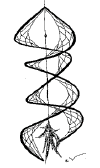
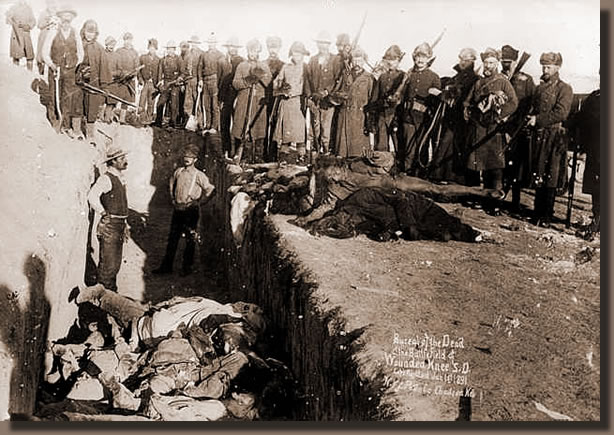


 ONE
GREAT DAY is a diversified ever evolving four piece based in Minneapolis. We
have humbly embraced the idea that music is bigger than us all. Our style varies from acoustic pop
to electric funk blues. If it feels good then we'll play it. This is our identity. Just listen to our music and enjoy it as it
is. God Bless all!!!
ONE GREAT DAY
!!!
ONE
GREAT DAY is a diversified ever evolving four piece based in Minneapolis. We
have humbly embraced the idea that music is bigger than us all. Our style varies from acoustic pop
to electric funk blues. If it feels good then we'll play it. This is our identity. Just listen to our music and enjoy it as it
is. God Bless all!!!
ONE GREAT DAY
!!!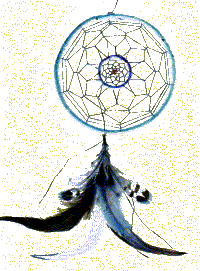
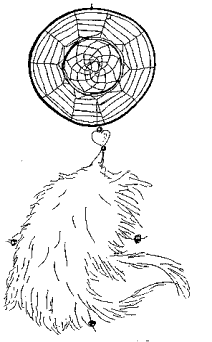

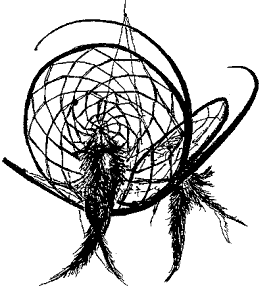
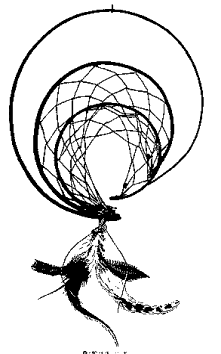

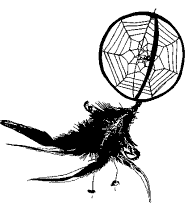
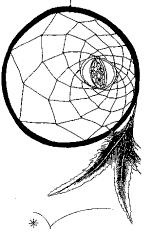



 Get
software to streamline your business and run it hands free.
Get
software to streamline your business and run it hands free.